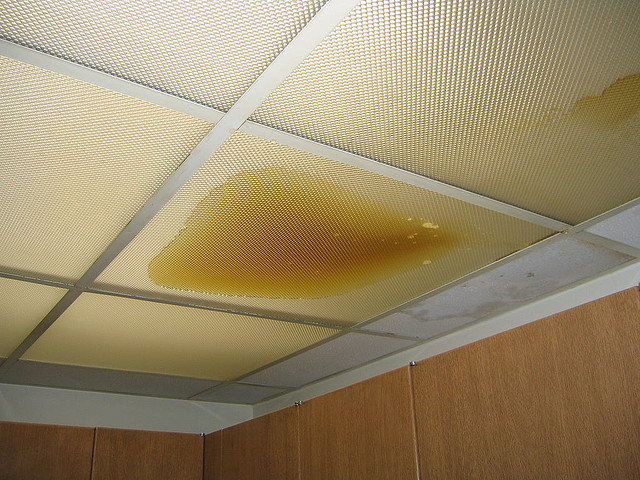How to Inspect If Your Home Has a Concealed Leakage
How to Inspect If Your Home Has a Concealed Leakage
Blog Article
Each person is bound to have their own individual conception on the subject of Detecting hidden plumbing leaks.

Early discovery of leaking water lines can reduce a possible calamity. Some small water leakages might not be visible.
1. Analyze the Water Meter
Every house has a water meter. Checking it is a surefire manner in which helps you find leaks. For beginners, switch off all the water sources. Ensure no person will purge, utilize the faucet, shower, run the cleaning equipment or dishwasher. From there, most likely to the meter and also watch if it will certainly alter. Since no person is utilizing it, there should be no activities. That indicates a fast-moving leak if it relocates. Similarly, if you discover no changes, wait a hr or more and inspect back once again. This implies you may have a slow-moving leak that can even be underground.
2. Check Water Intake
Evaluate your water costs as well as track your water intake. As the one paying it, you need to discover if there are any kind of inconsistencies. If you spot sudden changes, despite your usage coinciding, it indicates that you have leakages in your plumbing system. Bear in mind, your water costs must drop under the same variety monthly. A sudden spike in your bill suggests a fast-moving leakage.
A consistent boost every month, even with the very same habits, shows you have a slow leak that's additionally slowly rising. Call a plumber to thoroughly examine your property, especially if you feel a warm location on your flooring with piping underneath.
3. Do a Food Coloring Examination
When it comes to water consumption, 30% comes from bathrooms. If the color somehow infiltrates your dish throughout that time without flushing, there's a leak in between the tank as well as bowl.
4. Asses Exterior Lines
Do not neglect to examine your outside water lines also. Examination spigots by attaching a garden hose pipe. Should water leak out of the connection, you have a loose rubber gasket. Change this and also ensure all links are limited. It will certainly aid get it professionally analyzed and preserved yearly if you've got a sprinkler system. One tiny leak can lose lots of water and also surge your water bill.
5. Check and Assess the Scenario
Homeowners need to make it a routine to inspect under the sink counters as well as even inside cupboards for any type of bad odor or mold and mildew growth. These two red flags show a leakage so timely attention is required. Doing regular evaluations, even bi-annually, can conserve you from a major problem.
Examine for discolorations as well as weakening as a lot of pipelines as well as devices have a life span. If you presume dripping water lines in your plumbing system, don't wait for it to intensify.
Early discovery of leaking water lines can mitigate a potential catastrophe. Some little water leaks may not be visible. Inspecting it is a surefire method that helps you uncover leaks. One tiny leakage can squander heaps of water and also surge your water bill.
If you think dripping water lines in your plumbing system, don't wait for it to intensify.
Tips for Detecting Hidden Plumbing Leaks
Check for Signs of Water Damage
We recommend that you check the following places for evidence of water damage:
Near where you store your water heater
Around your sump pump
In areas where pipes are visible
Underneath cabinetry or a vanity beneath a sink
Where your outside hose bib isIf water damage is present, you may also notice mold and/or mildew or smell a foul or musky odor. You might also be able to hear the sound of water running where it shouldn’t be.
Perform a Water Meter Test
One of the easiest ways to determine whether you have a hidden leak on your property is to test your water meter. Turn off all appliances in that use water and make sure you don’t have any faucets running. Locate your water meter and record the reading on it. Continue to leave everything off for a minimum of two hours and then go back and see the meter reading. If it’s a noticeable difference, chances are you have a hidden plumbing leak.
Monitor Your Outside Usage
As the seasons change, you might use more water to keep your yard lush and green and your flowers blooming. However, it’s important to routinely ensure that your sprinkler or irrigation system is working properly and that any outside faucets are completely off. This way you’re not wasting any water.
Do the Toilet Food Coloring Test
Are you kept up at night because your toilet continues to run? If you’ve noticed your toilet randomly refills, especially when it’s not in use, it could mean you have a defective flapper tank and water will leak into the bowl. Fortunately, there’s an easy (and kind of fun!) way to test whether you’re dealing with this issue. Grab some food coloring and add a few drops into your toilet’s tank. Wait 15 minutes and then check to see whether the water in the bowl is colored. If it is, you have a leak within your toilet and the internal assembly will need to be repaired or replaced.
https://www.carterservices.com/blog/2020/february/tips-for-detecting-hidden-plumbing-leaks/

I found that blog post about Leaking water lines while perusing the search engines. Do you know another person who is very much interested in the subject? Why not promote it. We appreciate reading our article about Locating water leaks.
Report this page